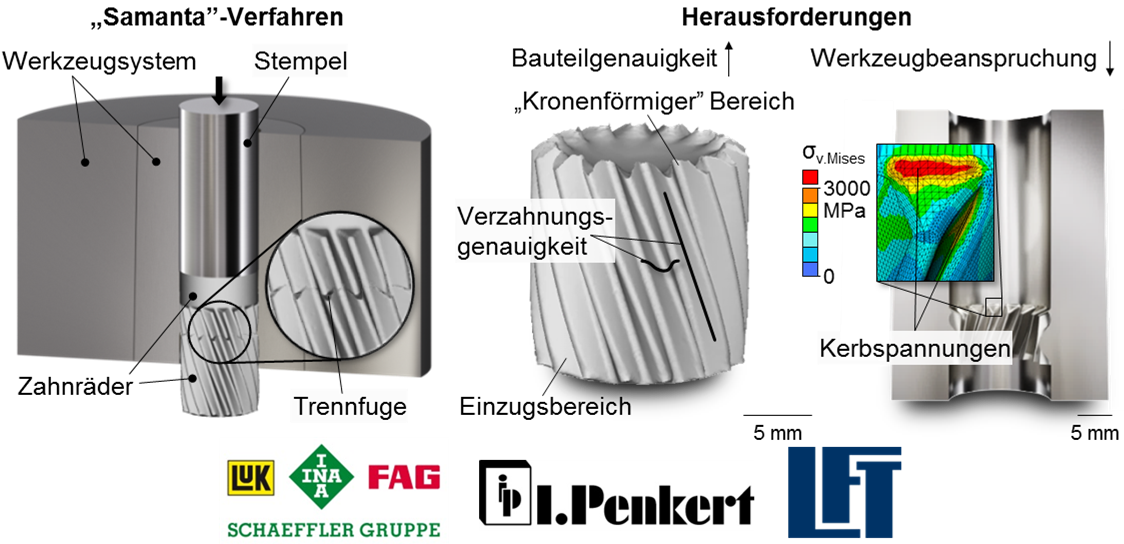
Determination and Enhancement of Process Limits within Cold Forging of Gears by the Samanta-process
Third Party Funds Group - Sub project
Start date : 01.07.2017
End date : 30.06.2019

Overall project details
Overall project
Ermittlung und Erweiterung der Prozessgrenzen beim Kaltfließpressen von Zahnrädern im ‚Samanta‘-Verfahren
Project details
Short description
Short description
In the drive and transmission technology, gears rank among the most frequently used machine elements in modern automotive and mechanical engineering. Conventionally gears are produced by cutting processes, as they ensure high geometrical quality standards. With regard to economic and ecological aspects, cold forging offers a promising alternative due to shorter production cycles and increased material efficiency. Furthermore, extruded gears show advantages considering the increased mechanical load capacity. An extrusion process for the manufacturing of helical gears is the so-called “Samanta”-process. Within this process, also referred to as extrusion in package, multiple blanks are pressed sequentially through a die, while the forming operation of one blank is stopped and another blank is inserted in the tool system. The decisive advantage of the „Samanta“-process towards conventional lateral and forward extrusion processes is the avoidance of an additional ejector system. In general, a negative impact on the gear quality in particular for helical gears by the ejector operation is prevented. In addition to that, the process chain during the component production cycle is shortened. The establishment of the “Samanta”-process in industrial applications faces challenges due to component and process related factors. Nevertheless, the potential reachable advantages are considered as key drivers for the industry and scientific community for researching this process. The focus is on the derivation of methods to increase component accuracy as well as tool life to apply this process for a profitable gear manufacturing in the future.
